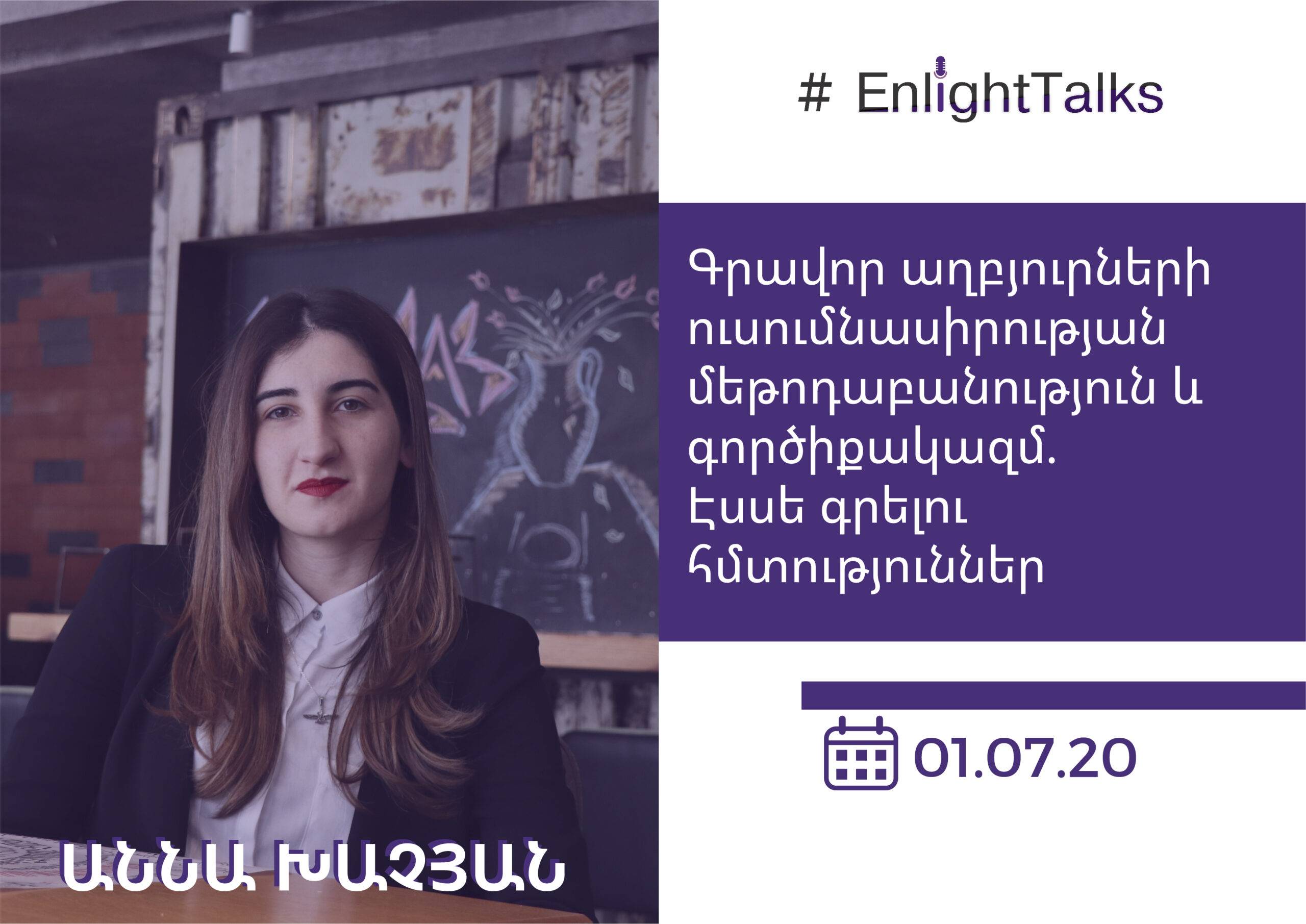#EnlightTalks series within the framework of “Enlight” three-month analytical internship program.
On July 1st, “Enlight’s” president, analyst, and historian by profession Anna Khachyan introduced a discourse on “The Methodology and Tools of the Research of Written Sources: Essay Writing Skills” within the framework of “Enlight’s” three-month analytical internship program.
Before getting to the main topic, the participants first told about their essay writing experience and presented their initial knowledge about critical thinking. Then they tried to define what is a “source.” After a Q/A with the speaker and a discussion of a few examples, they separated the types of sources: written, and non-written, verbal and non-verbal, primary and secondary (mediated) sources.
They also talked about sourceology and its relation to different theories (positivism, neo-Kantianism, modernism, postmodernism, etc.) If positivists considered the presence of written and verbal facts for the existence of source necessary, post-modernists considered everything as texts, including the absence of a text.
The speaker also experimented research of written sources with participants. The first source was a picture, where the crisis of Cuba was pictured not directly. The participants guessed that through analyzing and combining separate components of the picture. The second source was the “White man’s burden” caricature, the content and point of which also became apparent through analyzing and combining (the colors of the clothes of the people pictured in the image, the present words in the image, etc).
The speaker also talked about the four main components of analyzing written sources: origin (Who wrote it? When? Where? Why was it written? What were the authors’ motives? Is it trustworthy, and why?), context (When and where was it written? What was happening at that time?), content (What is the author’s opinion? What evidence, facts does he/she use? What is the target audience? What language does the author use?), and comparison (What do other sources say? Do the viewpoints match? Which source is more trustworthy?). For visual sources, particularly for analysis of a caricature, the following are necessary: knowledge about the events of that period (context), a study of the original caricature (content), understanding of the message of the caricature, comment.
The participants also analyzed the ballot paper of the referendum seeking an agreement on the annexation of Austria on March 13th, 1938 by Hitler. They discussed the separate components (color, size, etc.) of the ballot paper from the point of view of the guiding content.
In the next part of the meeting, the speaker spoke about critical thinking, which is considered to be a high-level way of thinking and having a critical thinking mindset, an ability to understand and evaluate reality deeply and multisided. The topic was especially highlighted within the framework of the “21st Century Educational Competencies” initiative developed in the United States.
They discussed the components, obstacles, and all those consecutive questions that influence to think of the problem critically. The speaker mentioned that it’s essential to distinguish between opinion, conviction, fact, and knowledge; she explained the essence of each. She also talked about the importance of improving written speech and asking the right questions.
In the next part of the meeting, the speaker referred to essay writing skills, specifically the two types of essays: reason essay and position expressing or point of view essay.
The speaker presented the structure of essays and the content of each of their components. In the end, she answered participants’ questions; they held discussions on particular examples. The participants were assigned to write an essay on the title “Is the world getting safer?”.
You can get acquainted with Anna Khachian’s analytical articles by following this link.
Prepared by Narine Galoyan
Translator: Argishti Yeghyan © All rights reserved.









